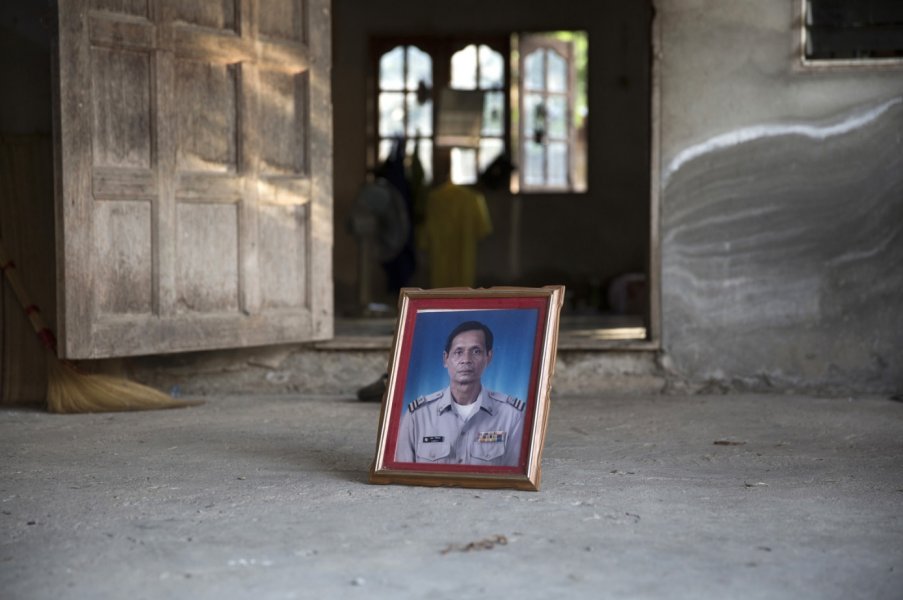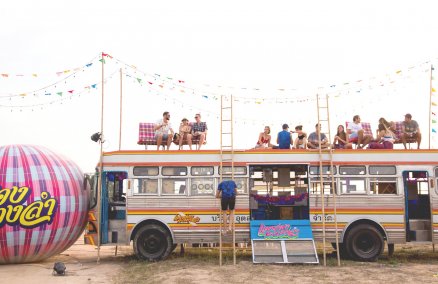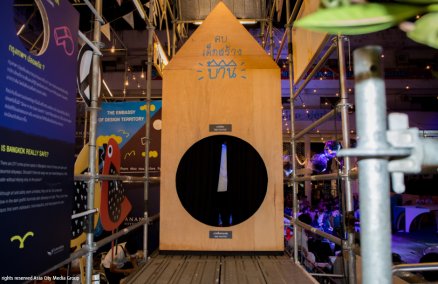How did this project start?
Luke: Four years ago, I was working on a project called "Climate Heroes" which focused on ordinary people doing extraordinary things. I met with environmental activist Jintana Kaewkhao who told me about her fight to block off a coal power plant in Southern Thailand. After hearing her story, and the stories about her murdered colleagues, everything changed for me. That was when I decided to cover this topic in depth.
How did you find all the other cases?
Luke: I started by researching on the internet, looking at Thai news websites and reading books by the NHRC [The Office of National Human Rights Commission of Thailand]. All the information I could find was quite limited. Luckily, I met with Protection International who had been looking into these cases for the past 3-4 years and had a lot more information.
Pranom: In the past few years, we have become a lot more focused on analyzing environmental activist cases. We started to compile a database of information to create a formal report. Once we had the cases, we were looking for a way to share these stories. That's when Luke perfectly came in.
What was it like traveling to meet the families?
Luke: We often just had a name of the victim, a few paragraphs about the case and the general area they came from. For most cases, we had to drive and ask around. When we met the families, many of them were glad to hear that someone was paying attention to the situation. Normally when an act of violence like this happens, the families tend to feel very alone. However, a few of them did decline to participate out of fear of getting exposed.
What made you decide to put the victim's photos on the spot of their death?
Luke: It was very difficult to work out how to do it, since it’s such a sensitive topic and one you have to do with so much respect. My friend reminded me that most Thai families will have a portrait of the deceased person in their house, so it gave me the idea to show what the victim looked like. While I was researching, I saw a police crime scene photo with a body on the floor and that's when I thought it would be powerful to mark the point where they were last ever seen alive.
What is the role of photography with such serious social issues?
Pranom: Last year, we produced a report of these cases for the Universal Periodic Review at the UN, who were reviewing the situation of human rights defenders in Thailand. We paired Luke's photos with the report, which was the first time art had been used to present the information. It captured the interest of not only NGO members but also many art lovers, proving that photography is a very powerful tool in raising awareness.
What has the feedback been like for the exhibition?
Pranom: So far, it has been amazing. It has grabbed the attention of all sorts of media, and many have told us that they want to investigate these cases further for their own news stories. In that way, it has given a lot of exposure to this serious issue.
Luke: We were very careful to not point fingers at anyone, to not place blame, and to focus on the victim and their story. In that way, we have avoided any conflict with the authorities. All we’re saying is that this is a serious problem that needs to stop because these heroic people are being killed because of it.
"For Those who Died Trying" will also be showcasing as a highlight exhibition at the Chiang Mai Photo Festival this Feb 3-12.
Below are some images from the exhibition:

Boonrit Channanrong was shot dead at a rubber plantation in Ta Chana District, Surat Thani province, on Dec 15, 2002. He was the leader of a local community working to expose illegal logging by national park officials.

Charoen Wat-Aksorn, 37, was shot dead whilst stepping off a bus on June 21 2004 in Bo Nok, Prachuap Kiri Khan Province. He was president of the Love Bo Nok Association who campaigned relentlessly against the construction of coal-powered plants in his area.

Supol Sirijant, 58, was shot dead in his home on Aug 11, 2004. He was the leader of the Mae Mok Community Forestry Network in Toen District of Lampang Provice who fought against the illegal logging of a nearby community forest.

Thongnak Sawekchinda, 47, was shot nine times whilst sitting outside his home on Jul 28, 2011, in Samut Sakhon town. Thongnak led villagers in Muang, Ban Phaeo and Krathum Baen districts in high-profile protests against air pollution which came from coal depots and factories.

Bunlert Duankoda was shot whilst working in his field in Nong Bua Lam Phu province, where he led a protest over the damages caused by a quarry mining company back in 1993.




















